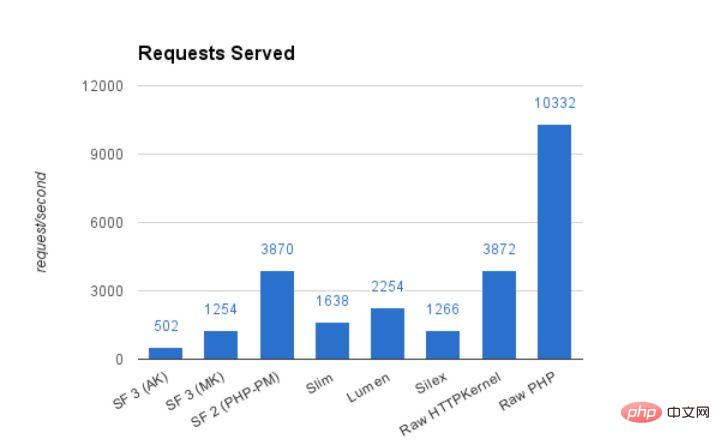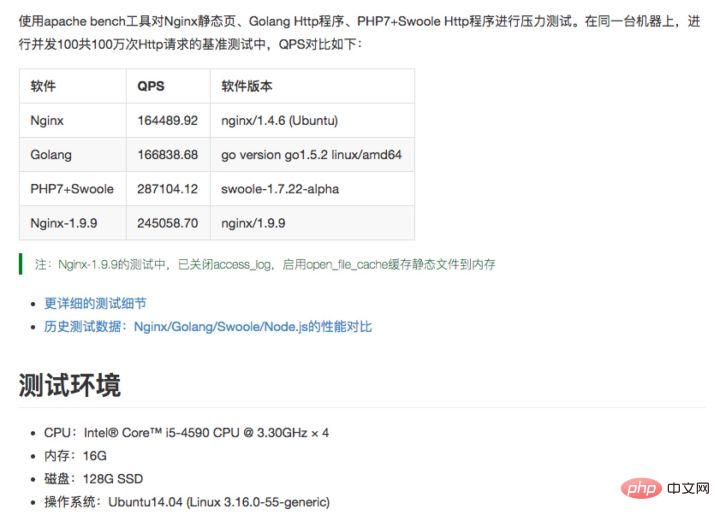 Backend Development
Backend Development
 PHP Tutorial
PHP Tutorial
 How to maximize the concurrency capability of the PHP server within limited resources
How to maximize the concurrency capability of the PHP server within limited resources
How to maximize the concurrency capability of the PHP server within limited resources
Assume that the application app uses 5W rmb to purchase from suppliers. On the day of registration, a large number of candidates flood in, and the number of concurrent requests soars to 30W, causing the system to shut down and deny service, causing the candidates to suffer Unable to register, can 5W rmb support 30W concurrency?
But for us, we might as well raise the problem to another angle: "How to maximize the server's concurrency capability within limited resources." Suppose you are a technical leader, how would you design and structure a project with a large amount of concurrency?
First of all, we can give a general idea of this project. From the above description, it is not difficult to see that the bottleneck of this project is "concurrent writing" rather than "reading", so from the resource allocation point of view, we can " "Write" tilt, here I write all the data in Redis. In addition, we also need to try our best to migrate MySQL read operations to Redis. The work done by MySQL is more inclined to some conventional non-concurrent read and write operations.

Server
When a user request comes, the load balancer loads it to each server

This is a stress test data from symfony, using the configuration of 1 CPU, 4 GB and PHP 7.

The data in the above picture comes from the swoole official website. After adding the execution of our actual business logic, we can find that when we use the resident memory startup method , 3 lower-end servers can solve the above problem that requires 16 servers.
Database
In fact, many people will understand that the bottleneck of many current Internet projects is more concentrated in database I/O. In this area, there is no particularly big gap between the various languages. Including the widely criticized PHP-FPM startup method, you can also use swoole and other methods to replace it. Therefore, in this project, we will focus more on the database, and we can try to use Redis to solve it. Of course, in the specific code, we also need to prepare a certain number of data connection pools in advance. In addition, it is also considered that although MongoDB's writing speed is much faster than MySQL under the same configuration, it still has obvious shortcomings compared to Redis.
Register and log in
Registration and login should actually be divided into two parts, which correspond to "write" and "read" respectively. In the case of high concurrent reading and writing, using MySQL directly will explode as you expected. Therefore, we can cache user data into Redis during the process of building the entire project. "Writing" problem: When the number of users is unclear and the amount of concurrency is large, I prefer not to store user data directly in the database. We can design a switch or threshold to set the user's warehousing method. When the concurrency is large, users can be asynchronously warehousing through MQ, but in normal times, users can be warehousing normally.
Submit form
Because this project is not a common flash sale and requires immediate notification, the design of our project greatly reduces the difficulty. The function of submitting the form is similar to registration. We can completely load the data into the database asynchronously and then review it in the background.
Summary
I won’t go into details about whether other CDN and MySQL require master-slave, it depends on the actual situation. Theoretically, if you use PHP-FPM, it will cost about 19,000 yuan/month to solve this problem of the project. When using swoole, it will cost about 4,500 yuan/month. I am not advocating swoole here. What I want to explain is that when When we face large concurrent projects, especially when the business logic is relatively complex, we can better solve the problem by using resident memory, and this has nothing to do with language. Finally, it should be noted that the above is only a theoretical stage, and actual data needs further testing. The material of the article comes from the Internet. If there is any incorrect writing, please point it out.
The above is the detailed content of How to maximize the concurrency capability of the PHP server within limited resources. For more information, please follow other related articles on the PHP Chinese website!

Hot AI Tools

Undresser.AI Undress
AI-powered app for creating realistic nude photos

AI Clothes Remover
Online AI tool for removing clothes from photos.

Undress AI Tool
Undress images for free

Clothoff.io
AI clothes remover

AI Hentai Generator
Generate AI Hentai for free.

Hot Article

Hot Tools

Notepad++7.3.1
Easy-to-use and free code editor

SublimeText3 Chinese version
Chinese version, very easy to use

Zend Studio 13.0.1
Powerful PHP integrated development environment

Dreamweaver CS6
Visual web development tools

SublimeText3 Mac version
God-level code editing software (SublimeText3)

Hot Topics
 1386
1386
 52
52
 Alipay PHP SDK transfer error: How to solve the problem of 'Cannot declare class SignData'?
Apr 01, 2025 am 07:21 AM
Alipay PHP SDK transfer error: How to solve the problem of 'Cannot declare class SignData'?
Apr 01, 2025 am 07:21 AM
Alipay PHP...
 Explain JSON Web Tokens (JWT) and their use case in PHP APIs.
Apr 05, 2025 am 12:04 AM
Explain JSON Web Tokens (JWT) and their use case in PHP APIs.
Apr 05, 2025 am 12:04 AM
JWT is an open standard based on JSON, used to securely transmit information between parties, mainly for identity authentication and information exchange. 1. JWT consists of three parts: Header, Payload and Signature. 2. The working principle of JWT includes three steps: generating JWT, verifying JWT and parsing Payload. 3. When using JWT for authentication in PHP, JWT can be generated and verified, and user role and permission information can be included in advanced usage. 4. Common errors include signature verification failure, token expiration, and payload oversized. Debugging skills include using debugging tools and logging. 5. Performance optimization and best practices include using appropriate signature algorithms, setting validity periods reasonably,
 Describe the SOLID principles and how they apply to PHP development.
Apr 03, 2025 am 12:04 AM
Describe the SOLID principles and how they apply to PHP development.
Apr 03, 2025 am 12:04 AM
The application of SOLID principle in PHP development includes: 1. Single responsibility principle (SRP): Each class is responsible for only one function. 2. Open and close principle (OCP): Changes are achieved through extension rather than modification. 3. Lisch's Substitution Principle (LSP): Subclasses can replace base classes without affecting program accuracy. 4. Interface isolation principle (ISP): Use fine-grained interfaces to avoid dependencies and unused methods. 5. Dependency inversion principle (DIP): High and low-level modules rely on abstraction and are implemented through dependency injection.
 How to automatically set permissions of unixsocket after system restart?
Mar 31, 2025 pm 11:54 PM
How to automatically set permissions of unixsocket after system restart?
Mar 31, 2025 pm 11:54 PM
How to automatically set the permissions of unixsocket after the system restarts. Every time the system restarts, we need to execute the following command to modify the permissions of unixsocket: sudo...
 How to debug CLI mode in PHPStorm?
Apr 01, 2025 pm 02:57 PM
How to debug CLI mode in PHPStorm?
Apr 01, 2025 pm 02:57 PM
How to debug CLI mode in PHPStorm? When developing with PHPStorm, sometimes we need to debug PHP in command line interface (CLI) mode...
 Explain the concept of late static binding in PHP.
Mar 21, 2025 pm 01:33 PM
Explain the concept of late static binding in PHP.
Mar 21, 2025 pm 01:33 PM
Article discusses late static binding (LSB) in PHP, introduced in PHP 5.3, allowing runtime resolution of static method calls for more flexible inheritance.Main issue: LSB vs. traditional polymorphism; LSB's practical applications and potential perfo
 How to send a POST request containing JSON data using PHP's cURL library?
Apr 01, 2025 pm 03:12 PM
How to send a POST request containing JSON data using PHP's cURL library?
Apr 01, 2025 pm 03:12 PM
Sending JSON data using PHP's cURL library In PHP development, it is often necessary to interact with external APIs. One of the common ways is to use cURL library to send POST�...
 Explain late static binding in PHP (static::).
Apr 03, 2025 am 12:04 AM
Explain late static binding in PHP (static::).
Apr 03, 2025 am 12:04 AM
Static binding (static::) implements late static binding (LSB) in PHP, allowing calling classes to be referenced in static contexts rather than defining classes. 1) The parsing process is performed at runtime, 2) Look up the call class in the inheritance relationship, 3) It may bring performance overhead.



